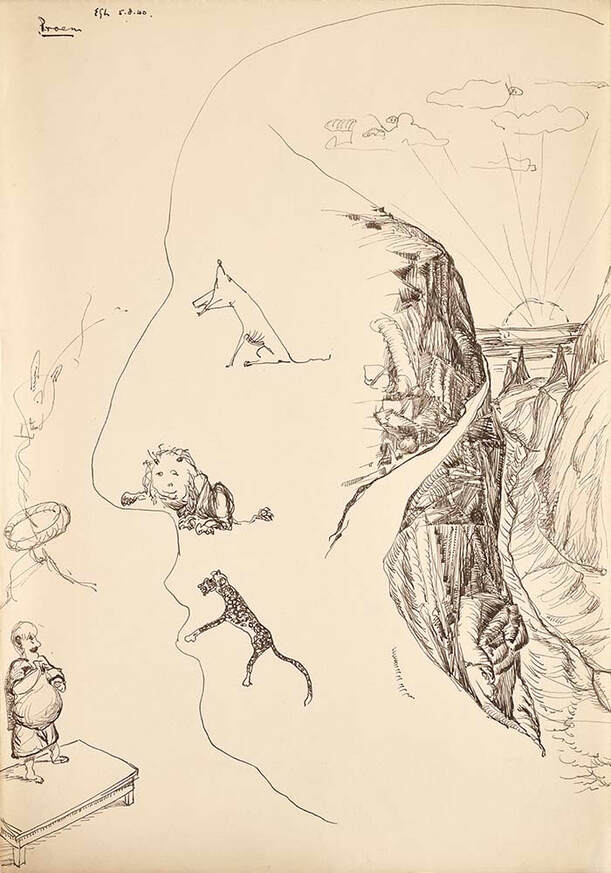Proem, 5/8/1940
Edwin created this drawing, Proem, on 5 August 1940. The meaning of it has always seemed mysterious, but recent research by Edward Cockburn-Price(*) has identified the subject as Dante Alighieri’s 1320 work, The Divine Comedy. This interpretation identifies the figure bottom left as Virgil, the three animals, in ascending order, as the leopard, lion and she-wolf that feature in the proem (introduction) of Dante's epic, and the path through the valley on the right as the "straight way" to salvation (symbolized by the sun behind the mountain).
Cockburn-Price goes on to propose a detailed psychological interpretation of Proem. He identifies the silhouetted face, formed by a meandering line starting at top right, as representing Edwin himself. He suggests the 3 beasts, embodiments of sin in Dante's epic, here represent the alluring temptations of an artistic career. (Edwin didn't take an artistic career path due to family pressure but came to regard himself as a serious artist.) Virgil, who's role in Dante's narrative is to guide a pilgrim's soul towards salvation, represents external forces advocating a stable career in the civil service. The positioning of Virgil outside the silhouette whereas the 3 beasts are within it, is interpreted as symbolic of Edwin's internal rejection of the external advice.
Taking this interpretation a stage further, could the scribbles above Virgil's head be a figure encircled by a wedding ring, perhaps representing further rejection of the constraints of a conventional life?
(*) Edward Cockburn-Price, A True Portrait of Edwin G. Lucas: Personal Subconscious Themes in his "Inner Landscapes" (unpublished MPhil essay, University of Cambridge, March 2024).
Taking this interpretation a stage further, could the scribbles above Virgil's head be a figure encircled by a wedding ring, perhaps representing further rejection of the constraints of a conventional life?
(*) Edward Cockburn-Price, A True Portrait of Edwin G. Lucas: Personal Subconscious Themes in his "Inner Landscapes" (unpublished MPhil essay, University of Cambridge, March 2024).
